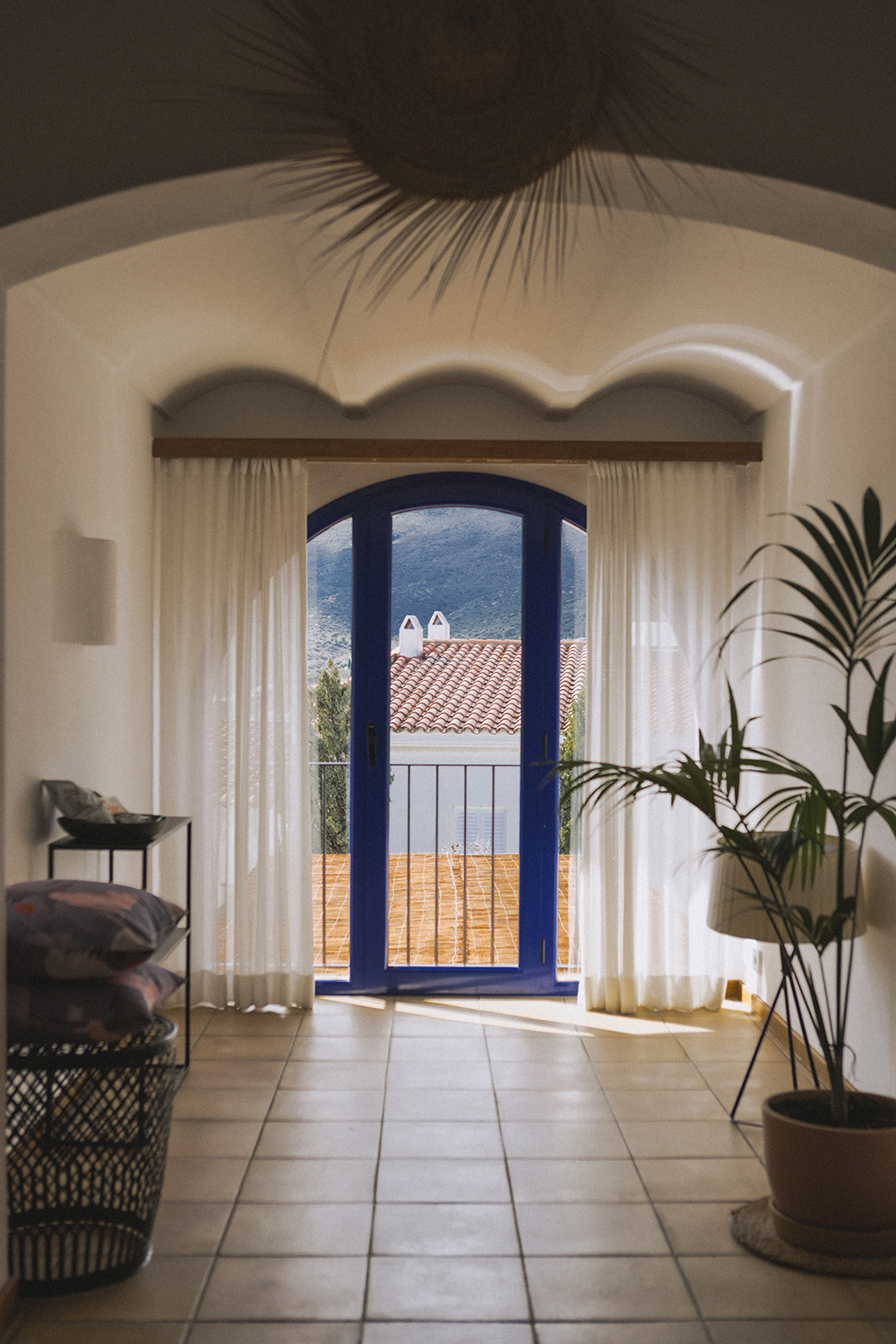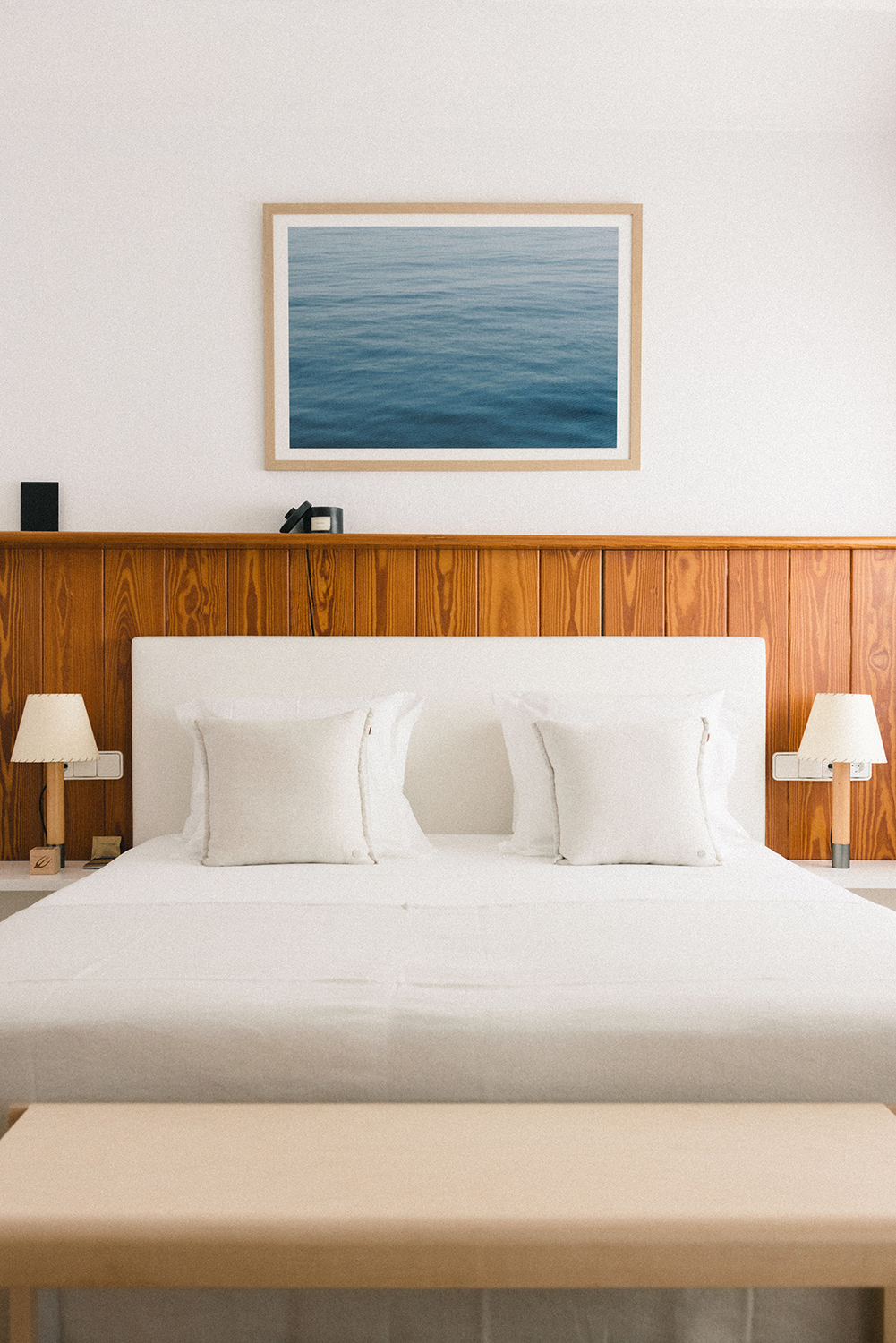In Cadaqués, the swift flight of the swallows announces the change of season. It’s common to find their nests on ledges around town. They are part of the landscape in this spot of the Costa Brava and maybe even a sign of good things to come.
That’s how Romy Pons Ruiz took it while directing the renovation project at the house of late painter Joan Ponç –her father-in-law– whenever a swallow fell into a bucket of water: she would help them out, dry them and then watch them graciously fly away. The makeover was to turn the family home into a petit hotel, which they decided to name Casa Nereta, as nereta is a Catalan name for “swallow”. It was true that good things, challenging things, enlightening things were to come.


Casa Nereta stands out in Cadaqués for several reasons. It is located above the town, only five minutes away from the center but sheltered enough to provide notable silence and rest. It seats next to Les Creus Tower, facing the main church with a panoramic view of the coast. It also shows a unique concept that goes beyond that of a boutique hotel to combine design, multisensorial experiences, wellness, art and history. The last aspect is probably the axis of the project –it certainly is the heart of this house.



A home is a living narrative. In the early fifties, Joan Ponç (Barcelona, 1927-Saint Paul de Vence, 1984) fell in love with a house for sale in Cadaqués, where he was already living. It belonged to an elderly English couple that had made it into a hostel (Hostal De La Torre was the name). The building had arches in the terraces (something unusual for the town at the time) and if you sat at the garden, the shore and the sea could be seen. Once it was his, Ponç transformed it into his home-studio. The original architecture integrated a Mediterranean style with certain English features: the Spanish painter adapted it to his likes and, more importantly, to the needs of his art. The latter wasn’t always achieved, as proven by that occasion when gallery messengers came to pick up his 2×5-meter painting Lluita interior and couldn’t get it out of the house until the artist’s son, also named Joan, cut a piece of a banister. This house –that hosted Duchamp, Man Ray and Salvador Dalí– is full of creativity and anecdotes. They say energy never really leaves.


Years after the artist’s death, in 1992, his sculptor son and painter daughter-in-law (Joan and Romy) decided to turn the house into a hotel. Romy had remodeled a few houses before, so she took the lead and started to create what Casa Nereta is today. They came up with the penthouse, included a private bathroom per each room, and merged a Balear sentiment into the interior design, inspired also by Goetheanum’s Rudolf Steiner, to come up with an organic aesthetic, curvy, flowy and with soft edges –one that three decades later feels very current.

Unfortunately, by the time the hotel was finished Joan died, so Romy and son James inhabited it for a while, ultimately choosing to travel greatly and settle somewhere else. But distance gives you the best perspective –and so does time. In 2016, Casa Nereta officially opened, spurred by Romy and managed by James, after a decoration intervention by Conti, Cert Studio.


Since then, Casa Nereta has made a name for its unique hospitality vision. With 13 rooms and a penthouse (made available as from this year), the hotel’s experience is based in an artistic, entertaining and wellness-prone offer, which includes Dj and music sessions, signature gastronomy, natural wine tastings, and seminars and workshops, aside from the joy of the architectural spaces themselves. The hotel’s shop holds a curated selection of design and art magazines and books, crafts-approached clothes and accessories (their latest collaboration is with Matteau), coffee beans by Nomad and sustainable beauty brands, like Rowse, Rassa Botanics, Mid/Night and MÄ Moments.

Bistró Nereta was launched in 2022 with a fusion of Japanese and Peruvian gastronomy. This year, the restaurant opens its kitchen for residences that will periodically bring culinary projects and chefs, such as Gota Wine and Ken Umehara.
“This is a very beneficial place for creating”, assures James Pons, an artist himself, who juggles his singing-songwriting, composing, photographic and visual work, with the management of the hotel. “Maybe it has to do with Cadaqués being built over pizarra stone, that is known to radiate a lot of energy. I guess that’s what all those people, those artists felt when they came and why they were so inspired to stay… It is one of those underground mysteries”, he quips. This explains why Romy and Joan put Figueras’ stones on top of the pizarra rock over which Casa Nereta stands, as well as a sheet of cork bellow the floors, to level the energies and assure a good rest.


It is James behind the sensorial experience of the hotel and the new formats that consolidate its concept. Updates for 2024 also include a yoga deck in the garden (yoga and pilates classes are available), a small massage room, and the news that Casa Nereta will extend its season, opening until January 2nd, instead of late October. “This will be highly valued by people that seek to flee the city, even in the winter”, continues James. “Each year I like to improve the project, enhance it in every aspect”.

The view from Casa Nereta bears witness of the cycle of nature. The foliage, the sky, even the color of the sea change through the year. Poetic Cadaqués never ceases to amaze James. And even after all these years, he still finds himself being in awe at an especially beautiful corner of the hotel or the way the afternoon light strikes a room. There are always surprises in this house made by artists and surrounded by dancing swallows.




